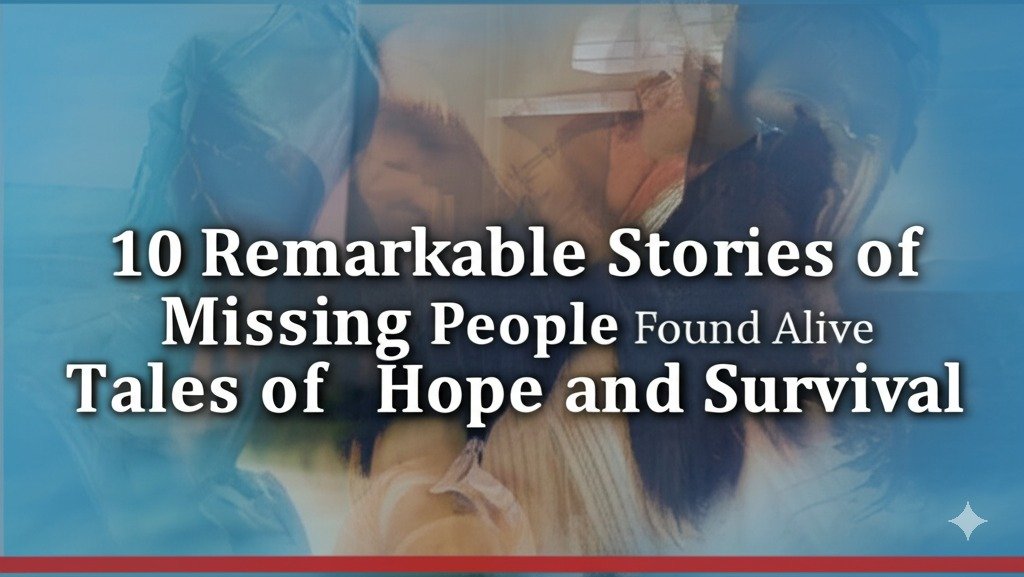Have you ever wondered about those miraculous moments when missing people defy the odds and return home? The stories of survival against seemingly impossible circumstances remind us that hope should never be lost. From Amanda Eller’s remarkable 2-week survival in a Maui forest to the inspiring escape of Jayme Closs after 3 months of captivity, these tales of resilience showcase the extraordinary strength of the human spirit. In this compelling collection, we’ll explore 10 incredible stories of missing individuals who were found alive, each one offering: • Detailed accounts of their disappearance and discovery • The crucial role of search and rescue efforts • Insights into their survival strategies • The emotional impact of their return Whether you’re fascinated by real-life survival stories or seeking inspiration in times of uncertainty, these remarkable tales will restore your faith in the power of perseverance and hope.
Key Takeaways:
- – From Amanda Eller’s 2-week ordeal in a Maui forest to Elizabeth Smart’s dramatic rescue, these real-life stories showcase incredible determination and will to survive.
- – Many cases highlight the crucial role of search and rescue efforts, law enforcement, and community support in bringing missing persons home.
- – The stories feature various circumstances, from kidnapping cases to wilderness survival, demonstrating that hope should never be lost, regardless of the situation.
- – Several cases, including Jayme Closs’s escape, reveal how victims used their resourcefulness and courage to overcome seemingly impossible circumstances.
- – These accounts emphasize the importance of maintaining nationwide search efforts and utilizing resources like the National Missing and Unidentified Persons System.
Conclusion
These extraordinary stories of missing people found alive serve as powerful reminders that even in the darkest moments, hope and resilience can prevail. From Elizabeth Smart’s remarkable rescue to the survival of an entire soccer team, each narrative demonstrates the indomitable human spirit and the tireless dedication of search and rescue teams. These real-life tales not only inspire us but also provide valuable insights into personal safety and the importance of community support in missing person cases. They highlight how the combined efforts of law enforcement, family members, and concerned citizens can lead to miraculous recoveries, even after years of absence. If you know someone who’s missing a loved one, share these stories of hope with them. Consider supporting organizations dedicated to finding missing persons or learning more about the National Missing and Unidentified Persons System. Remember, these stories prove that as long as there’s hope, there’s a possibility of reunion and healing.
FAQs
How do law enforcement agencies determine if a missing person case goes cold?
A missing person case typically goes cold when all initial leads have been exhausted and no new evidence emerges for an extended period. Law enforcement agencies continue to monitor these cases through national missing persons databases and periodically review them when new forensic technologies become available.
What role does social media play in modern missing person searches?
Social media has revolutionized missing person searches by enabling rapid information sharing across vast networks. Platforms like Facebook and Twitter help spread awareness, gather tips, and connect communities. Many missing persons have been found through viral social media posts and community engagement.
How do families cope with the emotional trauma of having a missing loved one?
Families often seek support through counseling, support groups, and missing persons organizations. Many establish foundations or advocacy groups to help other families in similar situations. Regular communication with law enforcement and maintaining hope are crucial coping mechanisms.
What are the most common circumstances that lead to missing person cases?
Most missing person cases involve runaways, family abductions, or individuals with mental health issues. Other common scenarios include human trafficking, natural disasters, and accidents. Understanding these patterns helps law enforcement develop effective search strategies.
How has DNA technology improved the resolution of missing person cases?
Advanced DNA testing has revolutionized missing persons investigations by enabling identification through family DNA matching, genetic genealogy, and analysis of degraded remains. This technology has helped solve numerous cold cases and provided closure to families after years of uncertainty.
What legal rights do families of missing persons have?
Families have the right to file missing person reports, receive updates on investigations, and access various support services. Many states have specific laws protecting families’ rights, including access to their loved one’s financial and medical records during investigations.

